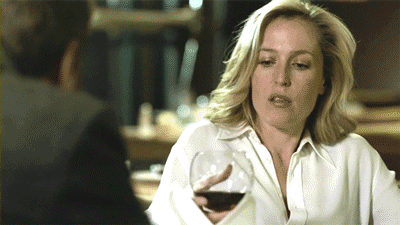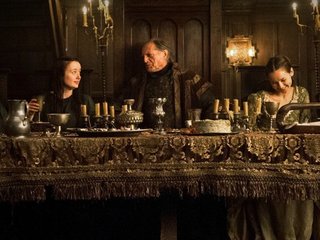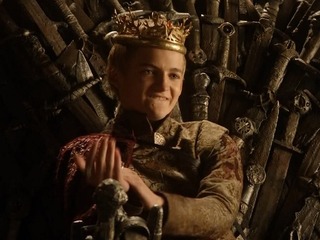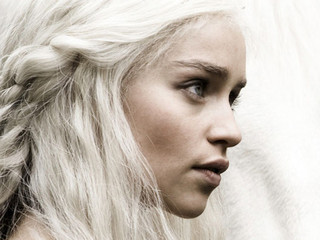House introduces bipartisan bill on AI in banking and housing
The bill would require a report on how these industries use AI to valuate homes and underwrite loans
Read more...
Earlier this month, Netflix released the full second season of its new original program, The Fall—a psychological thriller based in Belfast, Ireland about a serial killer who targets women. After binge-watching the show over the last week, I’ve realized two things about myself: 1) I now have a raging boner for Jamie Dornan, which is confusing because he plays a pretty terrifying sociopath (it’s the same confusion I feel as a feminist when I find myself singing along with Robin Thicke’s “Blurred Lines”), and 2) I now implicitly trust that any original Netflix program is going to be great.
Let’s expound on the second point a bit (we’ll get back to Jamie Dornan later). Netflix is already home to two of the only shows I will actually binge-watch in a single weekend: Orange is the New Black and House of Cards. The Fall, which first made its debut in the UK in 2013, has completed the trifecta of awesomeness that now makes me put so much faith in Netflix—so much so that I’m almost, ALMOST, seriously thisclose to giving Hemlock Grove a try. MAYBE.
Why have I placed so much trust in Netflix and not other networks? Because it takes women seriously.
Let’s rewind a little bit and go back in time to my maternity leave, when I was stuck on the couch with a baby with acid reflux disorder and could do nothing BUT binge-watch TV. While cruising around Netflix, I stumbled on The Tudors, a Showtime program. Sexy times in medieval costume? Yes, let’s. But five episodes in, I was bored. There were no interesting female characters, and those lucky enough to have a few seconds of dialogue were spray-tanned with too much makeup and hair extensions, making it hard to pretend that we were still having sexy times in medieval England.
I tried The Borgias (I was going through a phase), also a Showtime TV show. This time, I only got three episodes in before I was bored out of my mind, since The Borgias had no speaking female characters at all.
Shortly before all of this happened, I kind of lost my thing for HBO’s Game of Thrones. I just got burned out on rape and torture. And even then, sometimes the show’s creators couldn’t even be bothered to foreground the rape and torture, as in Craster’s Keep, when violent rape is just this thing going on in the background while two dudes talk about stuff.
At a time when other pay TV networks are facing major backlash for featuring gratuitous sexual violence and exploitative female nudity, Netflix shows like House of Cards and Orange is the New Black are scoring high marks from feminists for featuring complex female characters and their relationships. OITNB goes without saying—it destroys all of the woman-as-love-interest/helpmeet/confused-sexpot tropes. It features women of color, butch lesbians, transgender women, and more—all in their glorious complexity. Meanwhile, in a sea of Don Drapers, Walter Whites, and Rick Grimeses, House of Cards features one of the first and only female anti-heroes on TV: the cruel and calculating Claire Underwood. While other hugely popular shows have employed an anti-hero formula that includes a shrill and/or manipulative wife (Breaking Bad’s Skylar White, The Walking Dead’s Lori Grimes), Claire and Frank Underwood are a damned anti-hero power couple.
But it was really The Fall that convinced me that Netflix is actually taking its female viewers seriously. More than once called the most feminist show on TV, The Fall takes the crime drama genre to a whole new level and does something no other TV crime drama has ever done: it unpacks violence against women without fetishizing violence against women. While the CSIs and Law and Orders of the world are rife with faceless victims of violence shown supine and in various states of undress, The Fall actually gives the victims some screen time before they’re victimized, which does something totally revolutionary: it makes you feel bad for them. (Somewhere a jukebox record scratches and a bunch of teens in letterman jackets look up in bewilderment.)
The show follows Detective Superintendent Stella Gibson, played masterfully by Gillian Anderson (who is also my imaginary BFF), as she investigates the string of murders. 
While she navigates the choppy waters of sex and misogyny, serial killer Paul Spector is strangling women in their beds and then returning home to wash his young daughter’s hair in the bathtub. He’s breaking into his victims’ homes and stealing their underwear, and then consoling a young couple grieving over the death of their son in his job as a grief counselor. And here we have yet another Goddamn miracle: The Fall shows how misogyny and violence against women can exist side-by-side with other seemingly incongruent states of being, like being a loving father or a sympathetic friend. An abusive or misogynistic personality isn’t always obvious, like the much more vocal character of Jimmy.
After binge-watching both seasons of the show, I immediately texted a friend and told her to watch it pronto because it’s full of feministy awesomeness. She texted back, “thanks, I love feministy awesomeness!” I’ve told my sisters to watch, as well as the other parents in my kid’s playgroup. Because if you want to see viral marketing in action, go to a Gymboree class.
Did Netflix’s Chief Content Officer Ted Sarandos know that when his team selected the lineup? It may have just been a serendipitous fluke. I mean, this is the same team that signed up for Marco Polo, which has turned out to be little more than one big Asian fetish circle jerk. The harem scenes in particular bring to mind a table of male writers saying, “you know what’s hot? Naked chicks. Like, a whole bunch of them.” But even Marco Polo breaks new ground, with arguably the largest cast of Asian actors on TV at the moment. And of course, it features the amazing Joan Chen as Empress Chabi—herself a sort of Claire Underwood of the Mongolian Steppe. Indeed, while Marco Polo is regressive in many (many) ways, its female characters are actually pretty awesome. They get a fair amount of screen time and dialogue (even if poor Olivia Cheng is naked for three-quarters of the season), which is more than can be said of most shows on TV at the moment.
Did Netflix intentionally select shows that would appeal directly to female viewers? It would make only too much sense, considering the fact that women actually watch more hours of TV per day than men do.
Netflix doesn’t release much information about its viewers, so it’s impossible to know what percentage of Netflix subscribers are women. But Netflix relies heavily on data for making content recommendations, and it has an interesting way of tracking what viewers watch. Specifically, the company looks at “events”—where a viewer paused, switched to a different device, etc. Every time a viewer starts watching, a “view” is created in Netflix’s data systems, and data is immediately tracked, identifying how much of a title was watched and where the viewer left off. Netflix’s transition algorithm tracks what titles are most likely to follow others (example: if 100 people watch Orange is the New Black, and then 80 immediately follow it with The Fall, then the transition probability between the two would be 80%). Netflix has stated before that it doesn’t make recommendations based on user data, such as age and gender, but rather drills down on viewing habits.
Those recommendations are important, since 75% of users choose titles based on those recommendations.
Back in 2012, Ted Sarandos made a huge bet on House of Cards: he committed to two full seasons at a price tag of $100 million—without ever seeing a pilot. The decision was based on several key factors. Sarandos studied Netflix data to determine how many subscribers watched political dramas, how many watched Kevin Spacey movies, and how many watched David Fincher movies. The data led him to make a huge gamble, which has paid off. Last February, when season two of House of Cards debuted, a full 2% of Netflix’s (then) 36 million U.S. subscribers watched the entire season in the first weekend. That might not seem like a huge number, but watching eleven episodes of one show over the course of two days—that’s f*cking hard! That takes commitment. That’s you telling your friends and family that you can’t come to your nephew’s Bar Mitzvah because you have eight more episodes to watch.
The takeaway from all of this: Netflix is producing and delivering content based on what its viewers are watching—and exactly what they want to watch next. And being an Internet TV service puts it at a distinct advantage over the likes of HBO, Showtime, and other TV networks in that it can analyze all of those minute data points. While HBO is making shows that it thinks its subscribers may like, Netflix is making shows that its subscribers want to watch. And it's spending big bucks to do so. In 2015, Netflix plans to spend $3 billion on content.
The TV wars are heating up, with HBO scuttling out from under its rock recently to announce that it will soon be offering a stand-alone streaming service. Meanwhile, Netflix now has more U.S. subscribers than HBO (39 million compared to 30 million), though it still has a ways to go to catch up with HBO’s international reach (as of February 2014, HBO had about 114 million total subscribers). But Netflix is closing the gap. In 2014, the company added a record 13 million new subscribers, compared to 11 million in 2013, bringing the total to 57.4 million worldwide. Meanwhile, NPD found that over an 18-month period, the percentage of households subscribing to premium cable channels like HBO dropped six percentage points, while those subscribing to Netflix and other subscription video-on-demand services rose by four percentage points.
That’s because Netflix is onto something else. The ability to stream is great. Binge-watching is great. But ultimately, the key to winning the TV wars will boil down to the product itself: content. That’s why Netflix’s unique ability to identify exactly what viewers want will allow it to appeal more to female viewers. And what women want to see is more women. And Jamie Dornan. I would really like it if Netflix had a rating system where viewers could vote for more Jamie Dornan.
The bill would require a report on how these industries use AI to valuate homes and underwrite loans
Read more...The artists wrote an open letter accusing OpenAI of misleading and using them
Read more...The role will not be filled by Elon Musk, though he will be involved in who is chosen
Read more...


